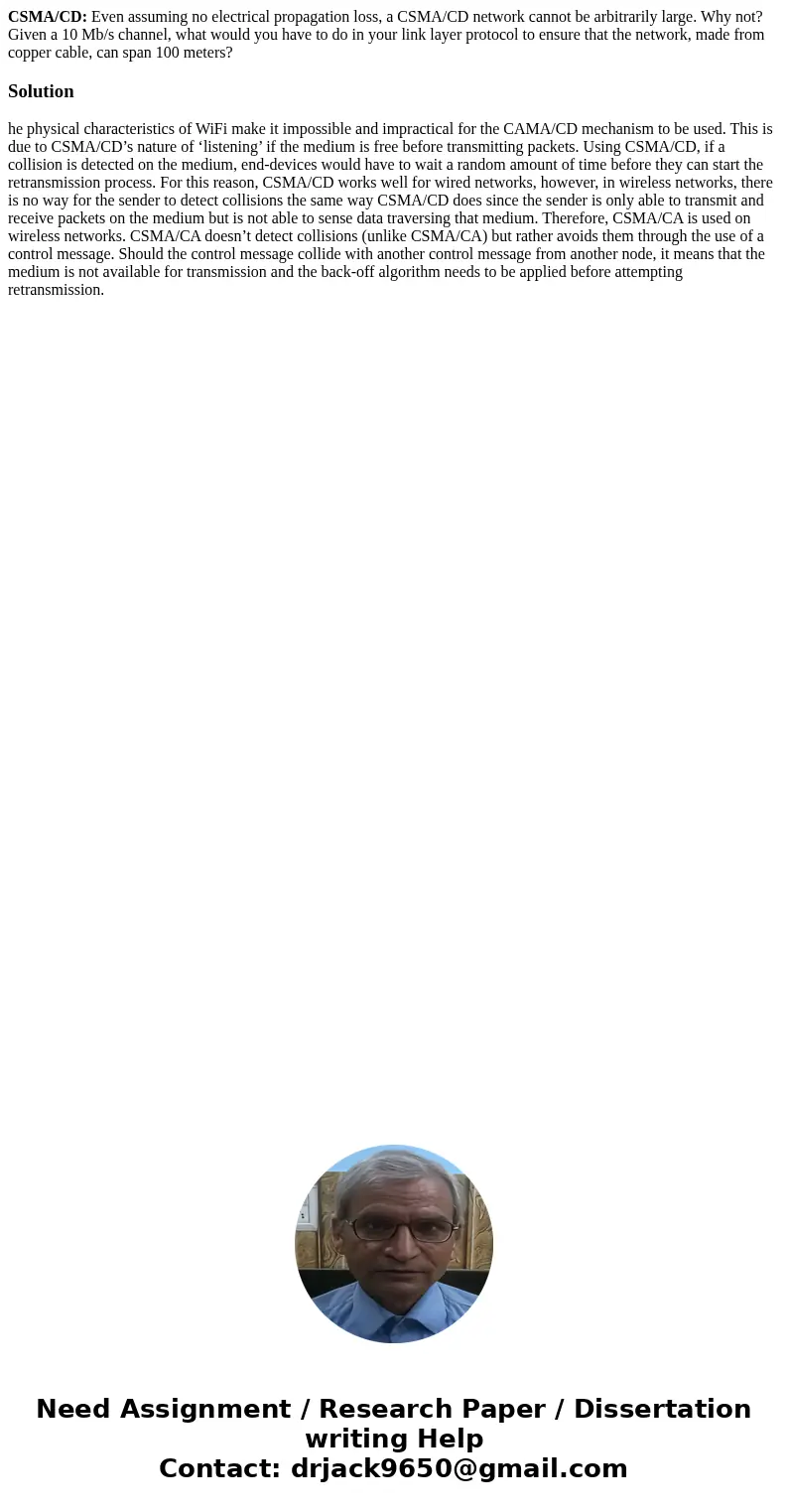CSMACD Even assuming no electrical propagation loss a CSMACD
CSMA/CD: Even assuming no electrical propagation loss, a CSMA/CD network cannot be arbitrarily large. Why not? Given a 10 Mb/s channel, what would you have to do in your link layer protocol to ensure that the network, made from copper cable, can span 100 meters?
Solution
he physical characteristics of WiFi make it impossible and impractical for the CAMA/CD mechanism to be used. This is due to CSMA/CD’s nature of ‘listening’ if the medium is free before transmitting packets. Using CSMA/CD, if a collision is detected on the medium, end-devices would have to wait a random amount of time before they can start the retransmission process. For this reason, CSMA/CD works well for wired networks, however, in wireless networks, there is no way for the sender to detect collisions the same way CSMA/CD does since the sender is only able to transmit and receive packets on the medium but is not able to sense data traversing that medium. Therefore, CSMA/CA is used on wireless networks. CSMA/CA doesn’t detect collisions (unlike CSMA/CA) but rather avoids them through the use of a control message. Should the control message collide with another control message from another node, it means that the medium is not available for transmission and the back-off algorithm needs to be applied before attempting retransmission.

 Homework Sourse
Homework Sourse